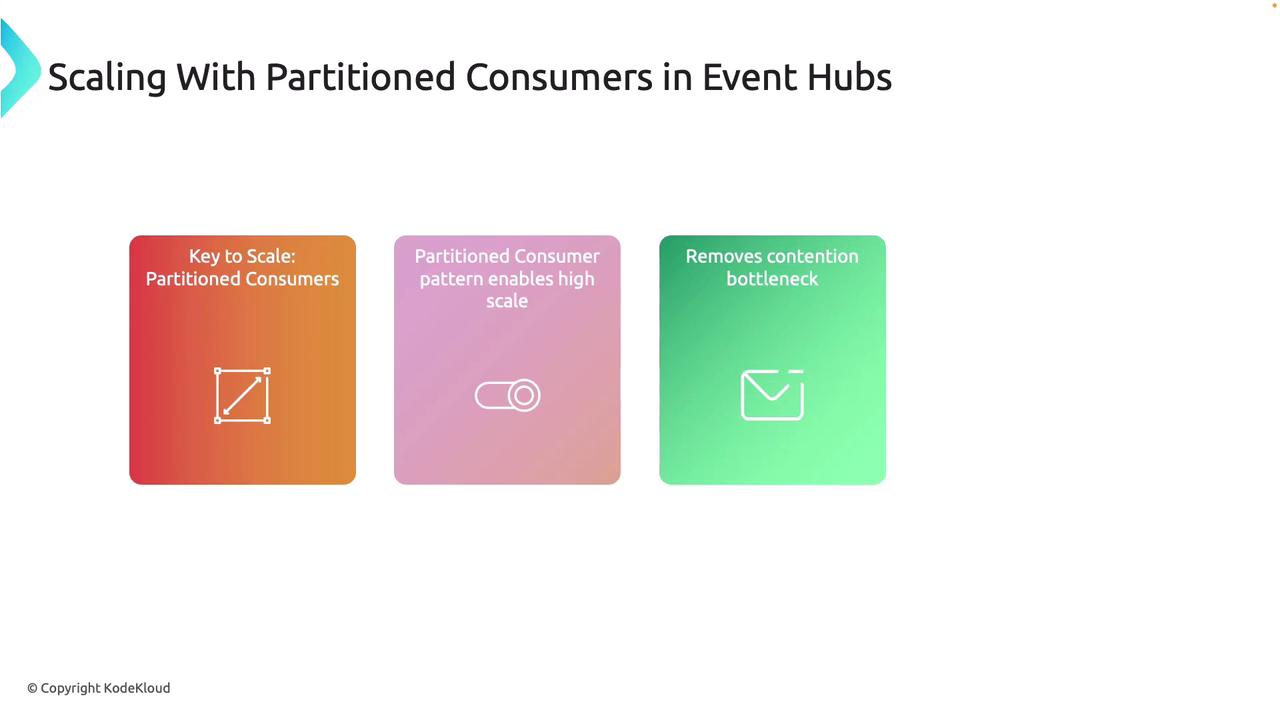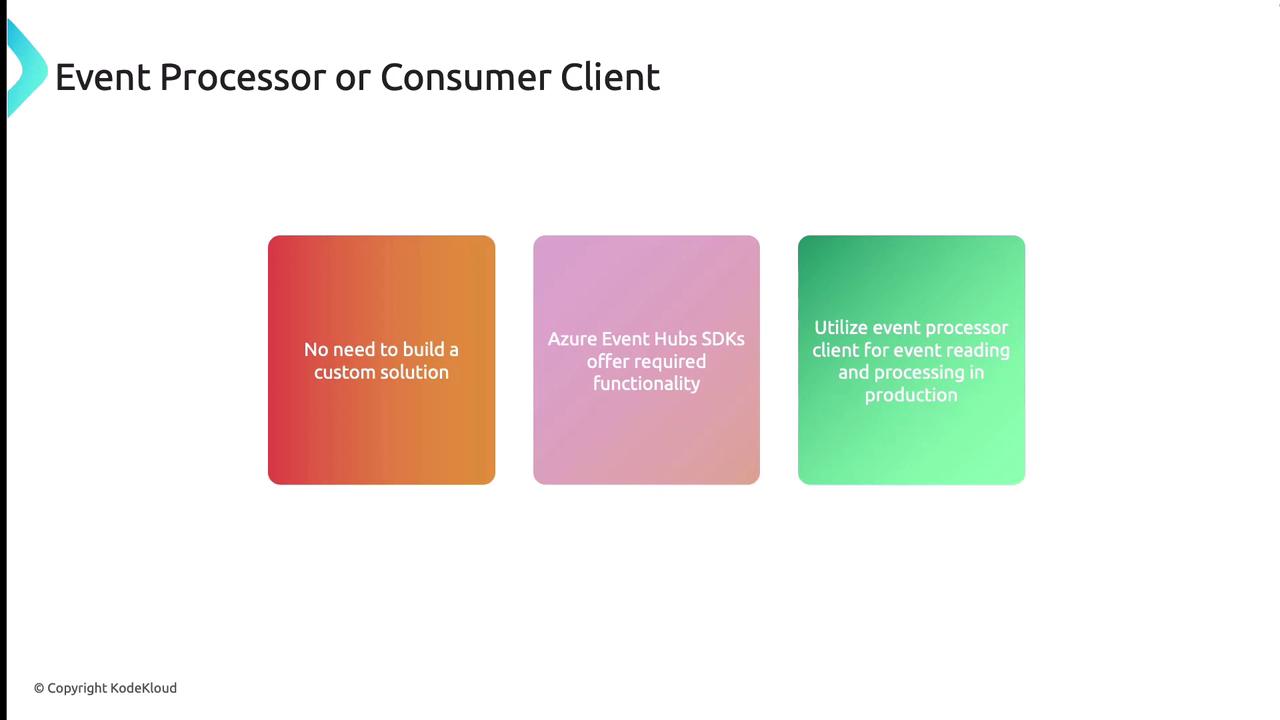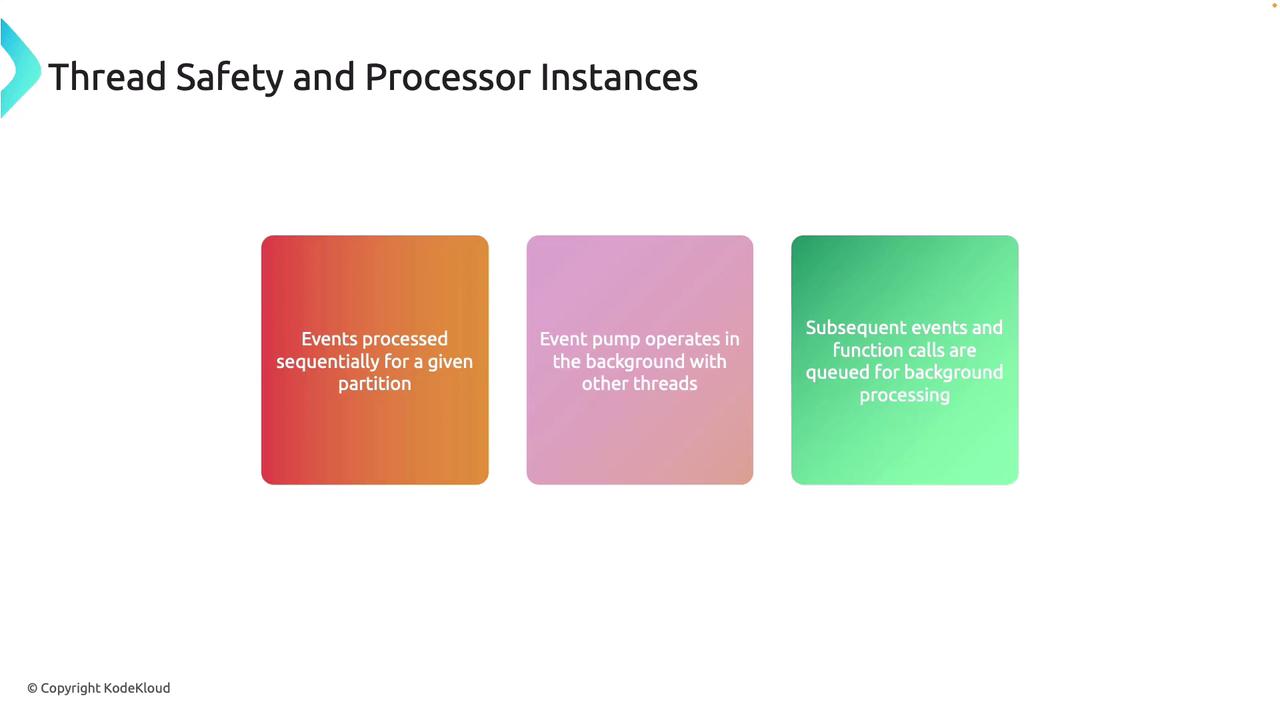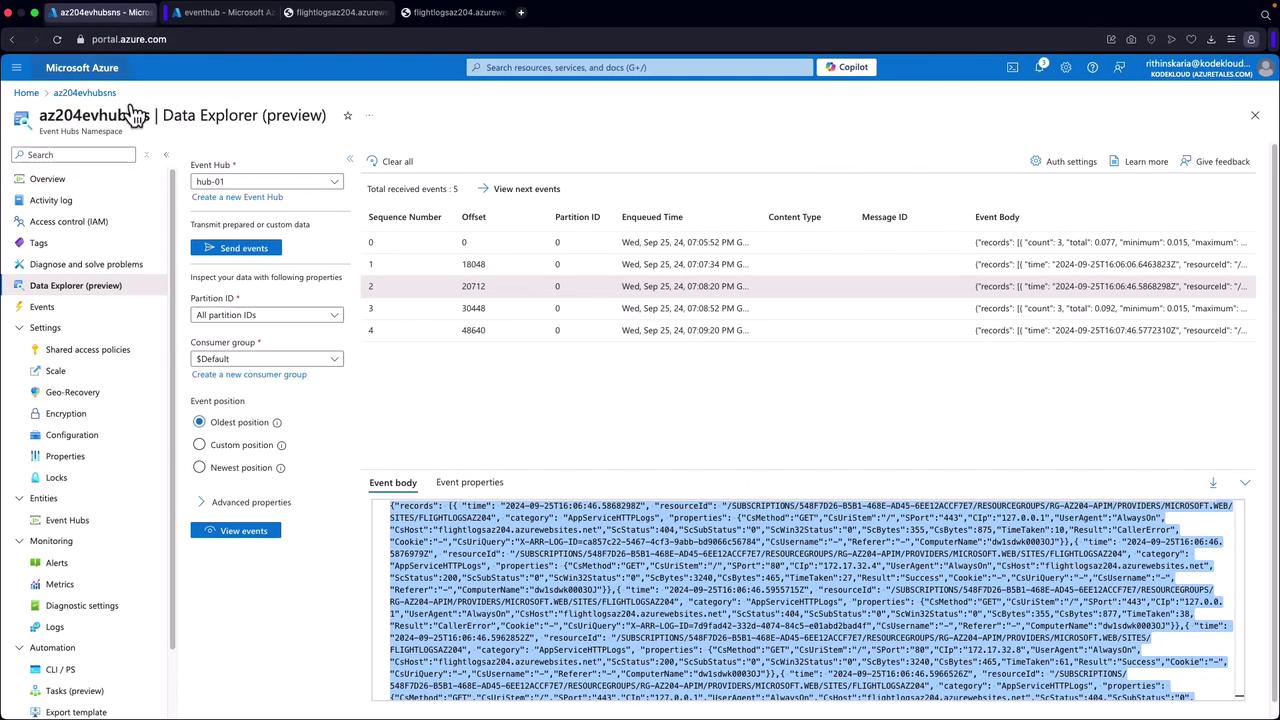AZ-204: Developing Solutions for Microsoft Azure
Exploring Azure Event Hubs
Scaling Your Processing Application
Scaling your processing application within Azure Event Hubs is essential for efficiently managing large volumes of data. This guide explains how partitioned consumers and other built-in features enable your application to scale seamlessly and perform optimally.
Partitioned Consumers for Parallel Processing
The fundamental approach to scaling with Event Hubs is through partitioned consumers. By splitting data across multiple partitions, the system achieves high parallelism and eliminates contention bottlenecks. This design pattern ensures end-to-end parallel processing, allowing your application to handle increased data loads efficiently.

Consider a scenario where you need to design a consumer for a distributed application. The solution must effectively handle scaling, load balancing, and seamless recovery in the event of failures, all while continuously consuming events. Azure Event Hubs meets these requirements out of the box, eliminating the need for a complex custom architecture.

Built-in Features for Reliable Event Processing
Azure Event Hubs offers several features to support scalable processing:
- Checkpointing: Automatically marks the last successfully processed event position, ensuring that processing can resume accurately after a failure.
- Thread Handling: Manages multiple threads safely by queuing events from the same partition for sequential processing.
- Event Processor Client: The SDK provides a robust event processor client that manages load balancing, checkpointing, and fault tolerance.

Recommended Approach
For most production environments, it is recommended to use the Azure Event Hubs event processor client. This approach simplifies load balancing, checkpointing, and fault tolerance.
Partition Ownership Tracking
Each instance of an event processor typically manages one or more partitions. During initialization, each processor is assigned a unique identifier and claims ownership of specific partitions by creating entries in a checkpoint store. This mechanism ensures that load is balanced effectively across all application instances.
![]()
Receiving Messages
When setting up an event processor, you define handlers for processing events and managing errors. Typically, the processor is configured to work with one or more partitions, and processing events quickly minimizes the load on the processor, ensuring that subsequent events are handled without delay.

Checkpointing
Checkpointing is a critical process that records the position of the last successfully processed event within a partition. This guarantees that, in the case of a failure, the event processor resumes from the correct position without reprocessing events. Such a feature is fundamental for maintaining state consistency during high-throughput operations.
Thread Safety and Processor Instances
The event processing function is invoked sequentially per partition. However, due to the continuous operation of the event pump in the background, events from different partitions might be processed concurrently. The system ensures thread safety by queuing events from the same partition, thereby avoiding any overlaps in processing.

Scaling via Azure Portal
Managing certain aspects of scaling, such as configuring partitions and throughput units, is possible directly through the Azure Portal. The portal offers a scaling menu that allows you to scale up or down based on your application’s throughput requirements. For example, increasing the number of throughput units boosts your data processing capacity.
Additionally, if you are using the event processor or consumer client available in the SDK, you can leverage associated storage accounts for checkpointing purposes.

Advanced Features
While the Azure Portal allows for straightforward scaling of partitions and throughput units, advanced features such as efficient message reception and thread safety are implemented within the Event Processor SDK.
Conclusion
By leveraging partitioned consumers, checkpointing, and the event processor client, Azure Event Hubs provides a scalable and resilient framework for processing extensive volumes of data. These integrated features ensure that load balancing, fault tolerance, and efficient data processing are achievable with minimal configuration.
In the next section, we will explore strategies to effectively control access to your events.
For more information, check out the following resources:
Watch Video
Watch video content